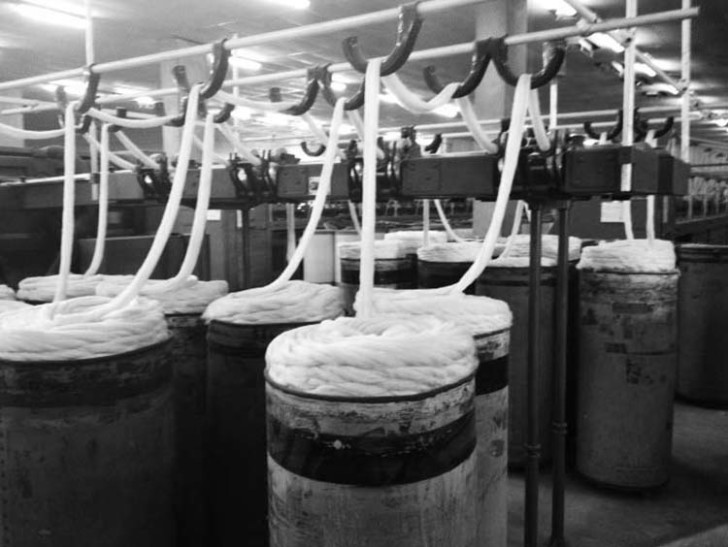Our Manufacturer
Since ancient times, Peru has boasted some of the highest quality indigenous cottons in the world. The length, strength and fineness of local cotton ensure quality spins and finished fabrics. This has given Peruvian weavers a significant foothold in the Latin American textile industry.
Named after agriculturalist Don Fermin Tanguis, Tanguis Cotton was first discovered and documented on the southern coast of Peru in 1908. Tanguis Cotton is of exceptional quality because of its soft touch, strength, excellent absorption, and high dye affinity. The Combed Tanguis Cotton produced by our manufacturer in Peru alone sets our tees apart from others out there. However, here are some other things that we do to take our tees to the next level.
1 Pre-wash
Before dying any of our raw fabrics or yarns, we make sure to pre-wash them to guarantee that any impurities or waste materials in the cotton are removed. This produces the quality conditions necessary for stable coloring and consistent results throughout the production process.
2 Stable Dying
We work with experts in our manufacturer’s color lab in Peru that enable us to create any color regardless of hue or brightness carefully and precisely. Through repeated rounds of testing we produce textile color palettes exactly as we envision them. We choose our dyes for their stability, color fastness and purity. By meticulously controlling temperature and pH levels during the dying process, we produce fabrics that are highly resistant to washing, perspiration and light. Thus, despite their vibrant colors, our natural fabrics do not bleed or fade.
3 Anti-Pilling
When individual fibers protrude from fabrics, they can form the small “bobbles” or “pills” that are sometimes seen on tees. These are most commonly seen on textiles made with short or synthetic fibers. By using natural fibers of exceptional length, such as Tanguis Cotton, as well as anti-pilling treatments, we eliminate the possibility of these surface abnormalities. Regardless of repeated washing or exposure to other types of friction, our tees remain smooth to touch.
4 Compacting
After being subjected to tension in the spinning process, cotton fabrics tend to be unstable, with a natural tendency to turn round and thus shrink. We use a compacting system designed to provide highly stable fabrics that won’t ever shrink horizontally or vertically after being washed or exposed to heat.
5 Finishing
By applying softening finishes designed for natural fibers, we are able to give our tees an exquisite smoothness that does not rid the fabric from its light and breathable quality. This gives the cotton a high degree of elasticity and resilience that makes it superior to expensive, short-lived synthetics.

